Choosing ideal fence posts might be challenging. You must consider various factors, including support, budget, land, and raising animals.
Of course, you can find multiple fence posts with similar but different features, advantages, and disadvantages.
So, we’re going to clarify the difference between a U post and a T post for you to clear the misunderstandings. You can choose the best fence posts after.
Are you ready? Let’s begin.
Table of Contents
Types of fence posts
It’s crucial to distinguish the main types of fence posts to understand the main difference between a U post and a T post.
The main fence post types are:
- Wood posts
- Metal fence posts
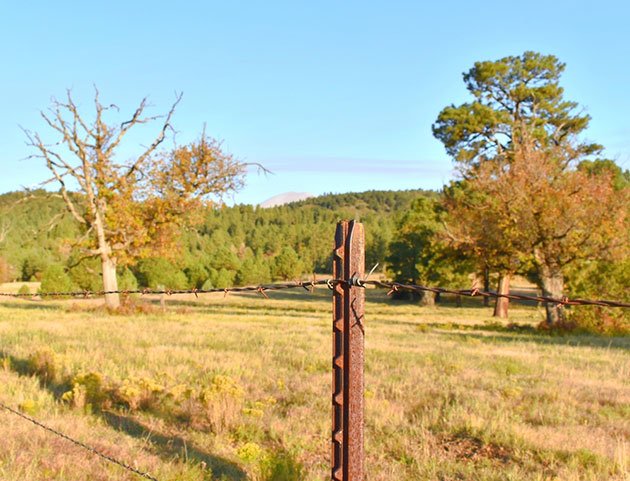
Wood posts are an ideal fence post type for wooden and wire fencing. You have to maintain the wooden fence posts vertically fixed.
Thus, you need to dig holes, surround them with gravel and fill holes with cement to make them durable and sturdy.
In addition, it’s imperative to dig a deep hole for the ground types, especially when it’s full of soil.
Another benefit is that wooden fence posts offer aesthetically pleasing wooden fencing.
But, if you plan to use wooden fence posts for small animals and crop fencing, you should think twice before making the final decision.
They’re easier to install and use than wooden wire fencing regarding metal fence posts.
You can consider metal fence posts after analyzing your livestock, crops, and fencing style.
Metal post types are excellent for a spacious farm, although they may not look as excellent as the wood posts.
Metal posts are unique as they have various types and shapes. However, the two most prominent categories are U-posts and T-posts.
Both post types are easy to install and effortless to use. But, what is their main difference?
U & T-posts: Main differences
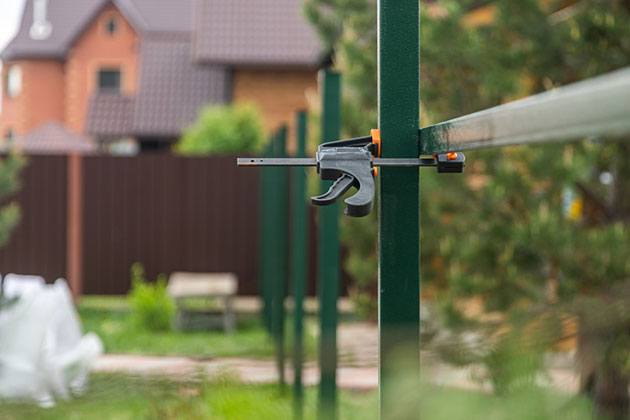
There are six different points:
- use of the fencing
- shape and height
- materials
- installation
- attach points & attachment methods
- price tags.
1. Use of the fencing
A solid and reliable fence is a must-have for larger animals who tend to jump over the fence or lean against it or stand on it.
Shaky, small posts can not withstand pressure and force stronger animals cause.
But, if conditions are not harsh, and you don’t have to keep animals in or out, you don’t have to use such a sturdy fence post.
This being said, U-posts are more robust, generally heavier duty & used in fencing with more robust animals, such as cattle or horses.
T-posts are used to protect poultry or your garden. T-posts are also quicker to drive in reuse. When looked at from the top, T-posts are called Y-posts.
2. Shape and height
Another difference between T-posts and U-posts is the shape. T-posts look like the letter T, while U-posts have a U-shaped cross-section.
Both fence post types come in broader sizes.
For instance, T-posts come in 6, 7, or 8-feet lengths, from light-duty versions to heavy-duty ones to withstand more pressure.
U-posts also have various types from 3 to 7-feet sizes. So, when choosing the proper size, ensure the fence post is taller than your finished fence.
It must be buried at least 2-feet deep into the ground to prevent animals or weather conditions from pulling the fencing out.
3. Materials
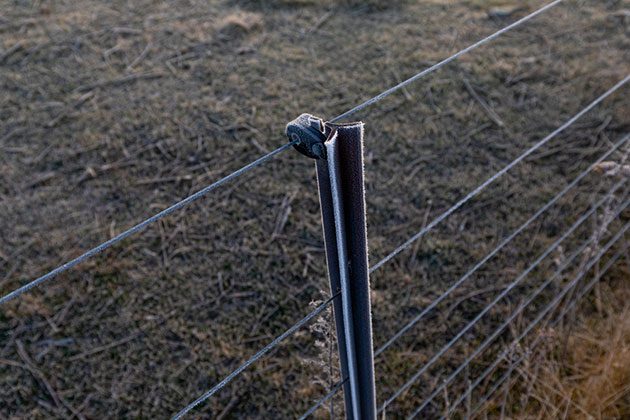
Both steel fence posts and treated wooden fence posts are popular materials for T-posts in wire fence constructions.
Threaded wooden fence posts are more expensive and more suitable for shorter boundary fencing.
So, threaded wood posts are more significant in looking for various wire fencing.
Compared with wood, metal posts are more affordable and easy to install. The T-post fencing uses rail steel for the main structure.
When you have a large area to cover and secure, these steel posts are excellent for your needs. They are also ideal for preventing wire mesh or barbed wire from sliding up or down the T-post.
4. Installation process
Both U-posts and T-posts are easy to install and use. Steel fence posts also weigh less than their wood counterparts, offering even a quicker setup.
An anchor plate located at the bottom of the fence post will keep both the post and fence upright and secure.
Many farmers use the wooden post types in the corners or different gate areas. However, you can also use the T-posts for corners with the right post accessories.
When animals put more pressure on the fences outside, turn your posts with studs inwards.
However, if animals put more pressure on the fences inside, you must place the posts with studs outwards.
Studs on the post hold the wire system and work optimally to keep the animals in or out. So there won’t be any push-and-pull situations, and you will prevent damage.
The best way to drive in steel T-posts is with an automatic or manual post driver, but please use a hammer or a sledgehammer if it’s not available.
Using T-posts for corner posts will save your time and energy, as you don’t need to dig post-holes and set wooden posts.
U-posts might have a spade, adding stability when increasing the contact area with the ground, but it will be quicker to hammer them into the ground if your U-posts don’t have it.
Depending on the use and installation, fencing posts are usually spaced between 8 and 12 feet along the fence line.
But, when using a barbed wire, you can set a bit larger distance between the posts.
You will determine the distance between the posts according to the fence wire type and how much it needs to stay tight. The fence is more substantial when the poles are closer.
However, when building electric fencing, ensure you use insulators to hold the electric wire properly.
5. Attaching methods
T-posts are studded or punched, requiring wire clips to attach them to the fencing wire securely. The wire clips will prevent excessive movements and keep the wire appropriately.
Wrapping wire clips around the fence wire and T-posts requires fence pliers or bending tools.
As T-posts are easier to dig into the ground, they are great for wire with smaller holes, like poultry netting.
On the other hand, U-posts utilize various holes punched along the posts. These holes make them securely attach to the fencing wire and keep the connection stable and secure.
When it comes to price, U-posts are generally less expensive than T-posts. However, both fence posts are sold in 10 or 50 bundles pallets.
However, depending on the type of fence, support, short or long-term plans, quality, and your budget, you will determine and select and install the proper posts.
As I always say, the pricing should always come after quality, as better quality requires more money.
Main advantages of the U-post
- cheaper but satisfactory quality
- durable and solid
- avoiding bending and chipping caused by the rugged environment
Main advantages of the metal T-post
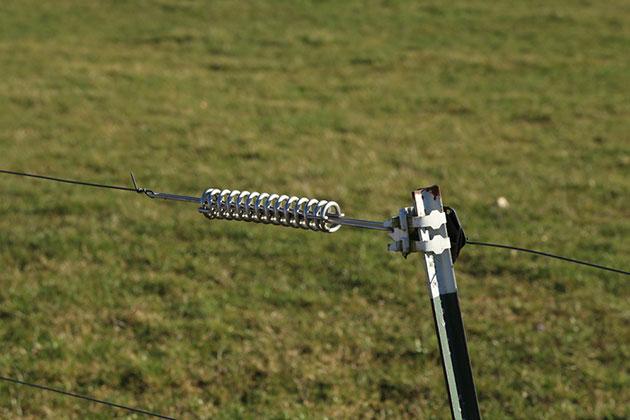
- reusable
- higher ground grasping strength
- convenient to support the wire
Of course, you can find the best post types here or search for them on the Amazon website. Again, you have multiple options to choose from.
Frequently Asked Questions
What is the difference between U Post and T-post?
You have seen six differences between U and T-posts. The biggest one is their shape and purpose.
The U models are often used for ponies, goats, and similar animals, while T models are primarily used for poultry.
However, you can find four other differences, including price, attachments, setup, and materials.
What is a T-post used for?
It’s used to support the wire fence. It has an anchor at the bottom to stay fixed and stable in the ground.
What is a U Post used for?
The main applications include:
- fixing timber fences by punching holes inside the U-post
- supporting traffic signs
- securing agricultural fencing for keeping animals in and predators out
- healing plants, such as trees, grapes, and tomatoes
- securing temporary fencing, lightweight fencing, etc.
- supporting wire mesh fencing, etc.
Are all T-posts the same?
No, they vary in size. You can search for various models between five and ten feet in their size.
Also, you should take into account that you’ll bury them deep into the ground, at least two feet below, to use them for a four-foot-tall fence, for instance.
This is crucial if you need higher fencing models for robust animals.
Can you use T post for the cattle fence?
Cattle require line posts. These can be either T or wooden posts.
They provide additional supporting elements to your fence length and size. They should also be taller than the fence.
However, T-posts are not that sturdy and reliable to hold your cattle inside the fenced area.
How far apart should T-posts be placed?
The distance should be calculated according to the fence type and the amount of support necessary for the fence to remain fixed and tight enough.
Typically, the distance should be between 8 and 12 feet.
How long do T posts last in the ground?
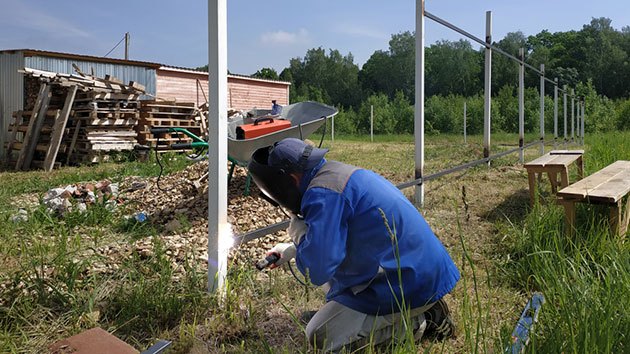
You can search for three galvanization classes: Class 1, Class 2, and Class 3.
- Class 1 galvanization has a thick zinc layer, lasting between 2 and 11 years before it rusts.
- Class 2 galvanization used in coastal areas with much saltwater lasts for two years or less.
- Class 3 galvanization is the thickest, and it can last between 13 and 30 years.
Conclusion
So, what post type do you choose? Is it a U-post or a T-post?
Your answer will depend on the posts’ main advantages and your needs.
Whatever your choice might be, always search for solid and reliable units with premium quality to last longer.
Also, please pay attention to the setup process, and follow the guidelines to install them correctly. Otherwise, your fences won’t be as productive and stable as they should be.
